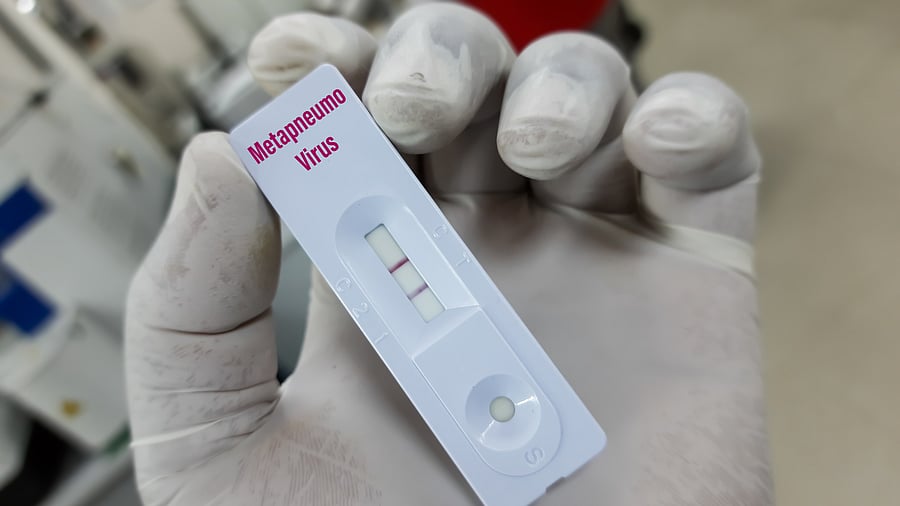
Representative image.
Credit: iStock Image
Amidst growing concerns over the impact of the human metapneumovirus (HMPV), the Indian Council of Medical Research (ICMR) has detected two cases in the southern state of Karnataka through routine surveillance for multiple respiratory viral pathogens, the Union Health Ministry said on Monday.
Later, it emerged that a two-month-old boy admitted to a private hospital in Ahmedabad has also been detected with HMPV.
Now that brings us to the vexed question of what HMPV is all about and how dangerous it is.
Origin of HMPV
The virus was identified for the first time in 2001 and isolated in the Netherlands by using the arbitrarily primed PCR technique for identification of unknown viruses growing in cultured cells.
As of 2016, it was the second most common cause (after respiratory syncytial virus) of acute respiratory tract illness in otherwise-healthy children under the age of 5 in a large US outpatient clinic. The recent outbreak of HMPV, apparently started in China, though neither the country's officials nor the World Health Organization (WHO) declared a state of emergency. According to a report by NDTV, the Chinese Center for Disease Control (China CDC) has confirmed that northern China is the worst affected is the worst affected with the HMPV virus rapidly spreading across the region, affecting mostly children below the age of 14.
What is HMPV?
HMPV can impair a person’s upper and lower respiratory tracts regardless of age, although older individuals, children, and those with weakened immune systems are most susceptible to infections, according to a report from CDC.
A severe HMPV infection may result in bronchitis or pneumonia. The time it takes to recover from HMPV varies on how serious the condition is and normally takes three to six days to incubate. It has similarities with other respiratory conditions like cold.
Discovered in 2001, HMPV belongs to the Pneumoviridae family along with RSV.
HMPV can cause upper and lower respiratory disease in people of all ages, especially among young children, older adults, and people with weakened immune systems.
Surveillance data from CDC's National Respiratory and Enteric Virus Surveillance System shows HMPV to be most active during late winter and spring in temperate climates.
Who might get the infected?
Children under 5.
People who are immunocompromised, such as those who take cancer medications or have had organ transplants.
Newborn.
People over 65.
People with asthma who use steroids.
People with COPD.
Causes of HMPV
HMPV is known to create seasonal outbreaks, mainly in the winter and spring and it can cause serious respiratory diseases. It also spreads from an infected person when they :
Cough
Shake hands
Sneeze
Touch objects or surfaces having the germ
Symptoms of HMPV:
According to the Cleveland Clinic report, Human Metapneumovirus produces symptoms similar to the common cold. One may experience the following :
Cough
Fever
Runny nose
Nasal congestion
Asthma flare-ups
Sore throat
Wheezing
Dyspnea
Treatment and precautions for HMPV:
Drink a lot of fluids to prevent dehydration.
Wash your hands for 20 seconds with soap.
Avoid close contact with people who are sick.
Don’t rub your eyes, nose, or mouth without washing your hands.
Take mild pain killers.
Try decongestants to reduce sinus pressure.
Avoid sharing your eating utensils with others.
